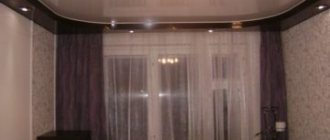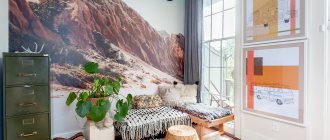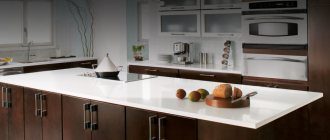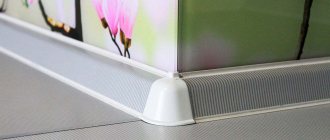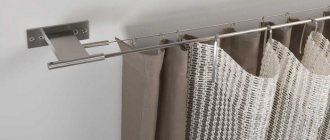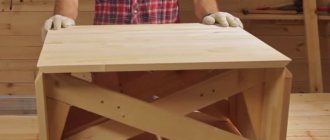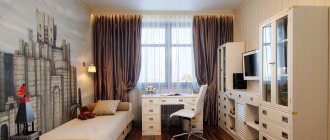When decorating a kitchen, small gaps appear between the countertop and the wall at the joints, which spoil the appearance of the room. They are hidden with the help of skirting boards, thanks to which a smooth transition is formed in this space.
Such products are sold in the form of structures consisting of two parts - the inner part and the strip. You will learn more about how to attach a baseboard to a kitchen countertop in our article.
How to attach a baseboard to a kitchen countertop
Purpose of the plinth
There is another name for plinth - it's molding . The product is designed to perform a number of functions, for example, it closes a joint, protects the wall from moisture or debris, and also complements the kitchen design, because a countertop without molding does not look so aesthetically pleasing. Let's consider each of the functions performed separately.
Accessories for kitchen furniture
Disguise
The resulting gap between the wall surface and the tabletop looks unsightly, so it must be covered with a decorative plinth. In addition, during installation, the ends of the tabletop may be damaged or minor defects may appear on the wall at the junction. All this can be easily eliminated by installing molding.
Skirting for kitchen countertops
Moisture protection
In the process of preparing various dishes or washing dishes, splashes of water or small particles of debris always remain on the countertop, which can get into unprotected joints. Over time, debris will accumulate there, creating an unpleasant odor, and if water gets on the back surface of the kitchen furniture, it can cause mold to appear. To prevent all these troubles, installation of skirting boards is required.
Skirting boards cover joints from moisture penetration
Creating an Attractive Look
It is difficult to argue with the fact that the installed plinth performs various functions, including decorative ones. Thanks to the correctly selected molding, the kitchen set takes on a complete look. Therefore, decorative products need to be selected not only by size, but also by external qualities. In construction stores you can see a large number of products from different manufacturers, so there should not be any problems with choosing a skirting board.
Skirting board for table top
Note! When choosing, you must take into account the quality of the product, because the service life of the skirting boards will depend on it. Secondary criteria include the material of manufacture and the type of molding construction.
Types of countertops for kitchen cabinets
No. 1. Functions of a kitchen plinth
The kitchen plinth is similar in structure and appearance to its floor counterpart. They cover the joint between the countertop and the wall (kitchen apron). Why is this necessary? For a number of reasons, because the kitchen plinth takes on a lot of functions:
- protecting the joint between the countertop and the wall from crumbs, splashes and debris. Even if all surfaces are perfectly flat, there may be a small gap between the kitchen unit and the wall. In most kitchens, deviations from ideal horizontals and verticals are significant, so very noticeable gaps can form. Debris and particles of moisture that will certainly get into the gap, in favorable kitchen conditions, will quickly become a place for the development of mold and mildew. Not only is it unhygienic, but the smell will be terrible;
- chipboard countertops (the ones that cost the least, which is why they have become popular) are very sensitive to moisture. To be more precise, moisture that gets onto the unprotected end . If it is hermetically covered with a plinth, then even the cheapest tabletop will last quite a long time;
- kitchen plinth excellent hides all defects, which are associated with uneven walls. The gaps between the kitchen unit and the wall can be significant, and if the walls are uneven, the size of the gap can vary noticeably in different parts. Molding will help to neatly hide this flaw;
- a correctly chosen plinth decorates the kitchen and makes the interior more harmonious and complete;
- Almost all kitchen baseboards have a place for laying an electrical cable , and the fact that at least some of the wires are disguised will only benefit the appearance of the kitchen.
From all this it is clear that the kitchen plinth is an important detail, the choice of which must be given attention.
Classification of skirting boards
Often, the kitchen set already includes a baseboard that matches the color scheme of the furniture. But if the set is made to order, then manufacturers offer customers several types of skirting boards to choose from. But such products do not always fit the main furniture or meet the customer’s requirements. In such cases, it is necessary to purchase the strips separately. Before purchasing, it is advisable to familiarize yourself with all types of skirting boards, because they are classified by shape, material of manufacture and design.
There are different types of skirting boards
By shape
There are many different forms in which such products are produced. The most popular of them include:
- triangular skirting boards;
- sketches;
- with rounded sides;
- flat or straight;
- square.
The shape and size of the skirting boards can also be different
It is necessary to choose the shape of the molding taking into account the gap between the edge of the table top and the wall. You should also choose a product taking into account the design idea.
By design features
Based on their design features, kitchen skirting boards are classified into cast and universal. Cast moldings have a rigid and more massive design. Such products are attached directly to the seal, since they are not equipped with a silicone profile. Cast skirting boards have a presentable appearance, but due to their increased rigidity they do not last very long.
Various types of skirting boards
The base of the universal plinth is a silicone seal to which special profiles are attached. Skirting boards can be produced in different colors, so if a product of the same color is already installed in the kitchen, then, if desired, replaceable inserts can be replaced by choosing a more suitable shade.
By material
Kitchen baseboards are made from different materials, each of which has its own pros and cons. We are talking about the cost of products, their service life and care features. Below are the most popular materials used in the production of moldings.
Table. Classification of skirting boards according to the material of manufacture.
| Type of plinth, photo | Description |
| Wood | Such skirting boards are mainly installed on countertops, which are also made of wood or chipboard. The material is relatively inexpensive, but it is quite difficult to match wooden skirting boards to the tabletop in order to obtain the desired combination. |
| Aluminum | A popular type of skirting boards. Such products are durable, they are not afraid of heating devices, and the surface is easy to clean. For the manufacture of skirting boards, polished and embossed material is used, covered with decorative finishing. Products may have different shapes and appearance. |
| Plastic | Polyvinyl chloride is used to make plastic moldings. The material is quite easy to modify, so manufacturers offer plastic skirting boards in different colors and shapes. Wood, marble or artificial stones can be used to decorate such products. |
| Stone | The material is more expensive, so skirting boards made of artificial stone are quite rare. Such products are installed vertically, pressing tightly against the wall surface. The baseboards are attached with glue. Their disadvantages include high cost and vulnerability to high temperatures. |
| Metal-plastic | Used to decorate countertops made from almost any material. Metal-plastic skirting boards can have a matte or glossy surface. It is not recommended to install such products near hobs. |
On a note! When choosing a kitchen plinth, you must take into account the size of the tabletop, or more precisely, its thickness. The standard tabletop has a thickness of 28 mm, but thicker and wider products are available.
Types of moldings for kitchen countertops
Sometimes a kitchen plinth comes complete with a ready-made set, and then all you have to do is install it in place. If not, you will have to go to the store and choose a table molding that matches the appearance and material of your set and kitchen accessories.
Invalid Displayed Gallery
Kitchen plinth made of plastic
Kitchen plastic plinth is made from polyvinyl chloride. Co-extrusion, which profiles are subjected to after molding, allows you to give their surface any color and pattern. As you can see by looking at the following photo, such molding can easily imitate artificial stone, marble or wood. This is a fairly popular way to finish a countertop.
Kitchen profiles made of plastic are quite elastic, which means they can repeat small errors in the geometry of the walls. The price of this finishing material is relatively low, and installing it on the countertop will not require much time and effort. The negative point is that installing it next to a built-in hob is undesirable, since PVC does not withstand high temperatures very well. But as a molding for a sink drawer, plastic would be an excellent option.
Furniture and kitchen plinths. Made from polyvinyl chloride
Aluminum profile for table top
The next most popular after plastic is aluminum tabletop plinth. It will cost a little more than PVC molding, but it will perform better in operation. Aluminum will last a very long time and will be easy to clean from dirt. In addition, metal molding has heat resistance that plastic does not, and it can be installed near heated surfaces.
Kitchen skirting boards made of aluminum are available in different modifications and with different types of coatings. The outer surface of such molding can be made of plain, embossed or polished aluminum, with or without replaceable colored trim. In the photo below there is a furniture plinth with a glued-on colored stripe: you can purchase the molding separately and separately the strip, which will match the color of the specific kitchen set.
Skirting board for kitchen, aluminum. The color is changed by gluing a special tape
Kitchen skirting boards made of artificial stone and marble
These moldings are called attached because they are mounted vertically, as if leaning against the wall. They are made from the same materials as countertops. The installation of such molding is carried out using glue, the same one that is used when sealing the joints of the tabletop parts: the sealing of the seams in the end is very good.
Stone kitchen skirting boards have a long service life and excellent appearance, and are not afraid of heating. This molding also has disadvantages: a marble or stone plinth for a table top does not bend at all, and therefore requires perfect alignment of the wall to which it will be adjacent; high price compared to plastic or aluminum.
An example of wall-mounted installation of a ceramic or stone baseboard for a table
The principle of choosing a kitchen plinth for a countertop
The choice of moldings for kitchen countertops is based on two parameters:
- Technical characteristics - compliance of the width of the plinth with the size of the gap between the wall and the countertop, the presence or absence of heating appliances in the immediate vicinity.
- Taking into account the style in which the kitchen set is made, as well as the type of accessories that are located near the molding. So, if you have railings installed under the hanging drawers, then it makes sense to choose a plinth that is similar in appearance to them.
In general, the most popular option is to match the molding to the color of the countertop. However, a profile selected, for example, to match the material of the sink, as in the photo below, will look no worse.
Basement plinth, kitchen, aluminum. Its design is chosen in accordance with the style of the entire kitchen set
Mounting methods
Before you begin installing the plinth, you need to familiarize yourself with the possible installation options for the product. All of them are so that, if necessary, the bar can be removed, for example, when temporarily moving a kitchen unit. But if the plinth is attached “tightly”, then this possibility will no longer exist.
Installation of wooden skirting boards
The first method involves fastening the baseboard to the tabletop, while the table itself is only pressed tightly against the wall, but is not secured with glue or screws. The second option is a little similar to the first, but now the baseboard needs to be attached to the wall, and it is only pressed against the surface of the countertop.
The plinth is attached to the tabletop
Important! When installing non-separable products, it is not customary to use fasteners, such as bolts or self-tapping screws. The shape of the moldings does not allow this. Therefore, for this purpose, sealants are used that simultaneously perform two functions - fixing and sealing the joint.
Features of installing the plinth
If the design of the plinth is collapsible and it consists of two parts, then one of them must be attached to the surface of the tabletop or wall using small self-tapping screws. The second part neatly snaps onto the first.
Trend - kitchen sets without baseboards
Today it is not necessary to screw the baseboard between the wall surface and the countertop. At the peak of popularity, kitchen units are installed without baseboards. For this, certain wall aprons or tiles are used.
Only after installation of both the lower and upper bases of the set are installed the tiles (apron) with the obligatory sealing or rubbing of the joint with the countertop.
Previous post Why does a bed with a lifting mechanism squeak?
How to remove a creaking bed Next entry How to hang kitchen cabinets on the wall: hangers, mounting on a mounting strip
Installing a baseboard for a countertop
As soon as the choice of kitchen baseboards is completed, you can begin their installation. Of course, such work requires careful preparation, one of the main points of which is the search for the necessary tools and materials.
Preparing tools
To install kitchen moldings, you need to prepare the following tools:
- hacksaw for metal;
- transparent silicone in a tube;
- carpenter's knife;
- set of self-tapping screws;
- screwdriver;
- tape measure, ruler or other measuring device.
Preparing tools for work
Along with skirting boards, stores sell decorative corners that can be used to hide the joints. There are end, external and internal corners. All of them are attached to the surface of the baseboard using silicone. If the corners are purchased separately from the molding, then you need to choose them in such a way that the products match perfectly in color.
Decorative corners for skirting boards
Instructions
The process of installing skirting boards in the kitchen is simple if everything is done according to the recommendations and rules. Below are step-by-step instructions, following which will greatly facilitate the work.
Step 1 . Measure the length of the tabletop and cut the required pieces of baseboard. To do this, you need to use a metal saw to make the cuts as even as possible.
Cut the skirting board to the required length
Step 2 . Divide the plinth into two parts - internal and external. You need to start working with the base of the molding, that is, with its inner part.
Dividing the baseboard into two parts
Step 3. Screw the base of the baseboard to the tabletop using a screwdriver. Instead of self-tapping screws, some craftsmen use glue, but in this case it will be impossible to carefully remove the installed baseboard. The optimal distance between screws is 15 cm.
Step 4. Once the base is screwed on all sides, proceed to install the decorative part of the baseboard. First you need to install the latch on one side, and then proceed to install the joining angle.
The joining angle is set
Step 5. When installing the joining angle, you need to remember that the front part of the plinth must extend under it by at least 5 mm. The corner itself is fixed with glue.
Glue is used to fix the corner
Step 6 . Using a tape measure, measure the desired length of the second baseboard, leaving a small gap so that part of the face latch is under the corner. If necessary, cut off the excess part of the baseboard.
The length of the second plinth is measured
Step 7 . Insert the upper part of the plinth under the decorative corner and press it against the base until a characteristic click appears. This means that the plinth is securely fixed.
The upper part of the plinth is inserted
Step 8. The edges of the plinth are closed with special plugs, which are sold complete with decorative corners. They will hide the cut area of the baseboard, thereby improving the overall appearance. The plugs are easy to install, you just need to press them.
Special decorative plug
Step 9 . This is what the finished plinth looks like. If all installation steps were correct, then the mounted molding will preserve this type of kitchen for a long time. To eliminate the possibility of water getting into the seams formed between the wall and the edge of the table top, this area must be treated with a sealant.
Installed kitchen plinth
Subsequent care of the baseboard
Correct installation of the plinth is not the only factor influencing the condition of the product and the length of its service life. It is also important to learn how to properly care for baseboards. First of all, it is not recommended to use any detergents to wipe the baseboard. Dust should be wiped off with water only. Otherwise, dirt may be absorbed into the surface of the baseboard, especially if it is made of wood or chipboard.
You need to properly care for the baseboard
Note! You can also remove dust using a vacuum cleaner - this is the most effective and safest way to clean the surface of baseboards. But before cleaning, you need to put special attachments made of rubber on the vacuum cleaner.
Vinyl and plastic cleaner
If large stains appear on the baseboard that cannot be removed with plain water, you can use an abrasive cleaner. But before this, you need to test the selected product by using it to wash a section of the kitchen baseboard in an inconspicuous place, for example, behind the microwave. This is the only way to ensure that the powder or other cleaning agent is harmless. If everything is normal and the surface of the plinth is not damaged, then the product can be used to treat other areas of the plinth.
Kitchen baseboard
Even if the care of the skirting boards after their installation was of high quality, the products may still deteriorate slightly over time (their appearance deteriorates). In this case, restoration of the moldings is required. Restoration of wooden products involves applying one or several layers of varnish, and restoration of stone skirting boards involves grinding the surface . The sealant may also need to be replaced, but the old material must be removed first.
